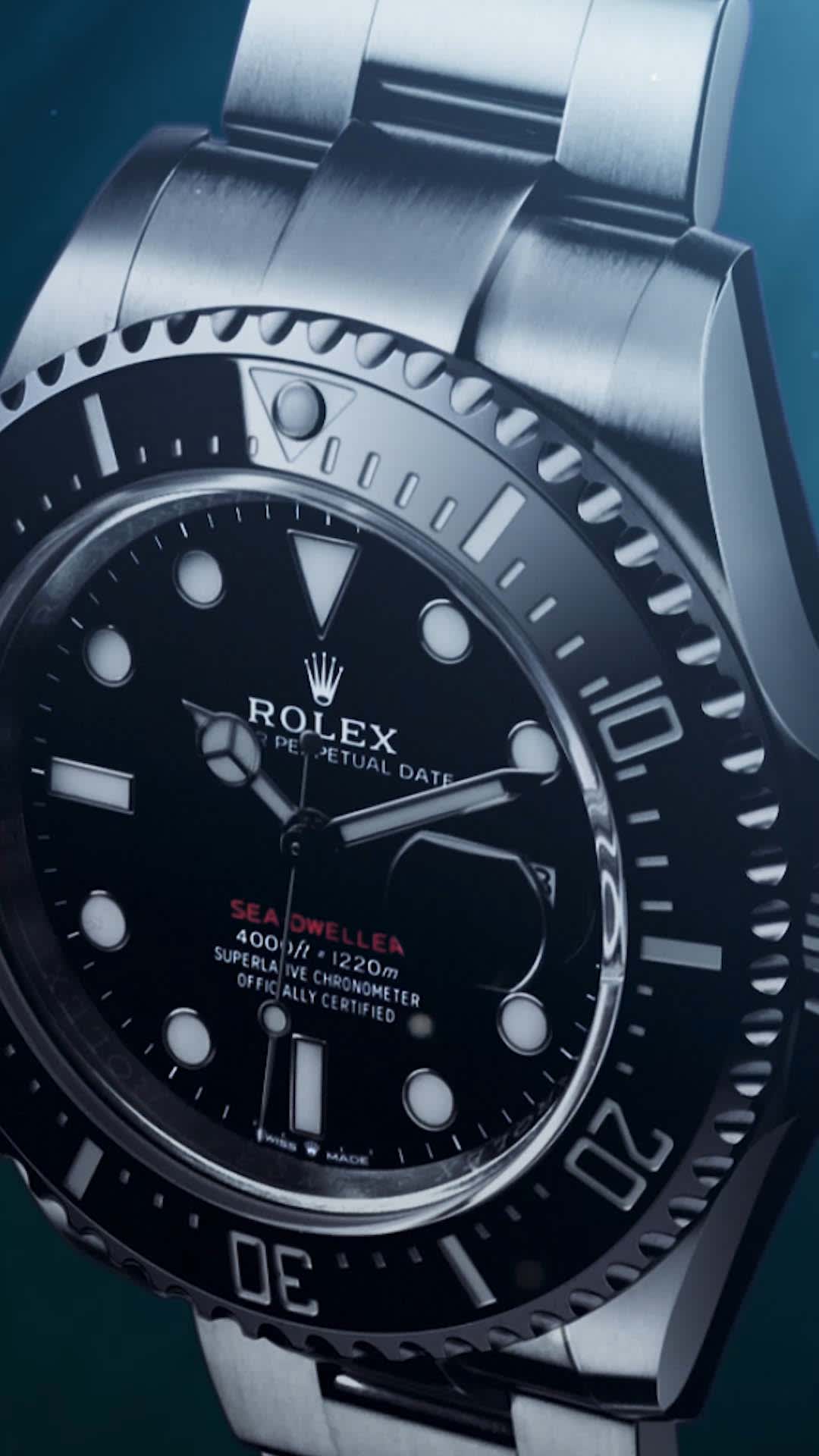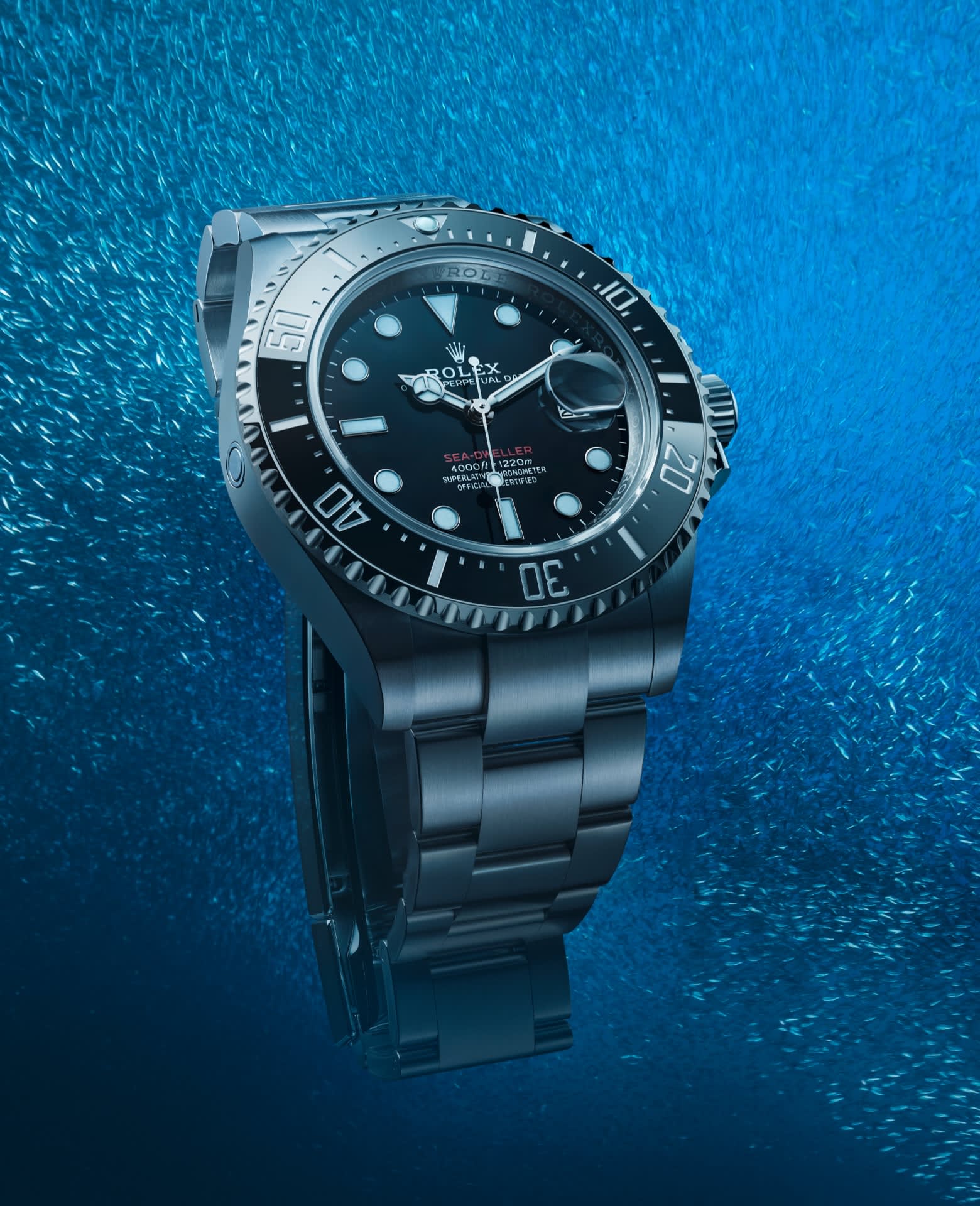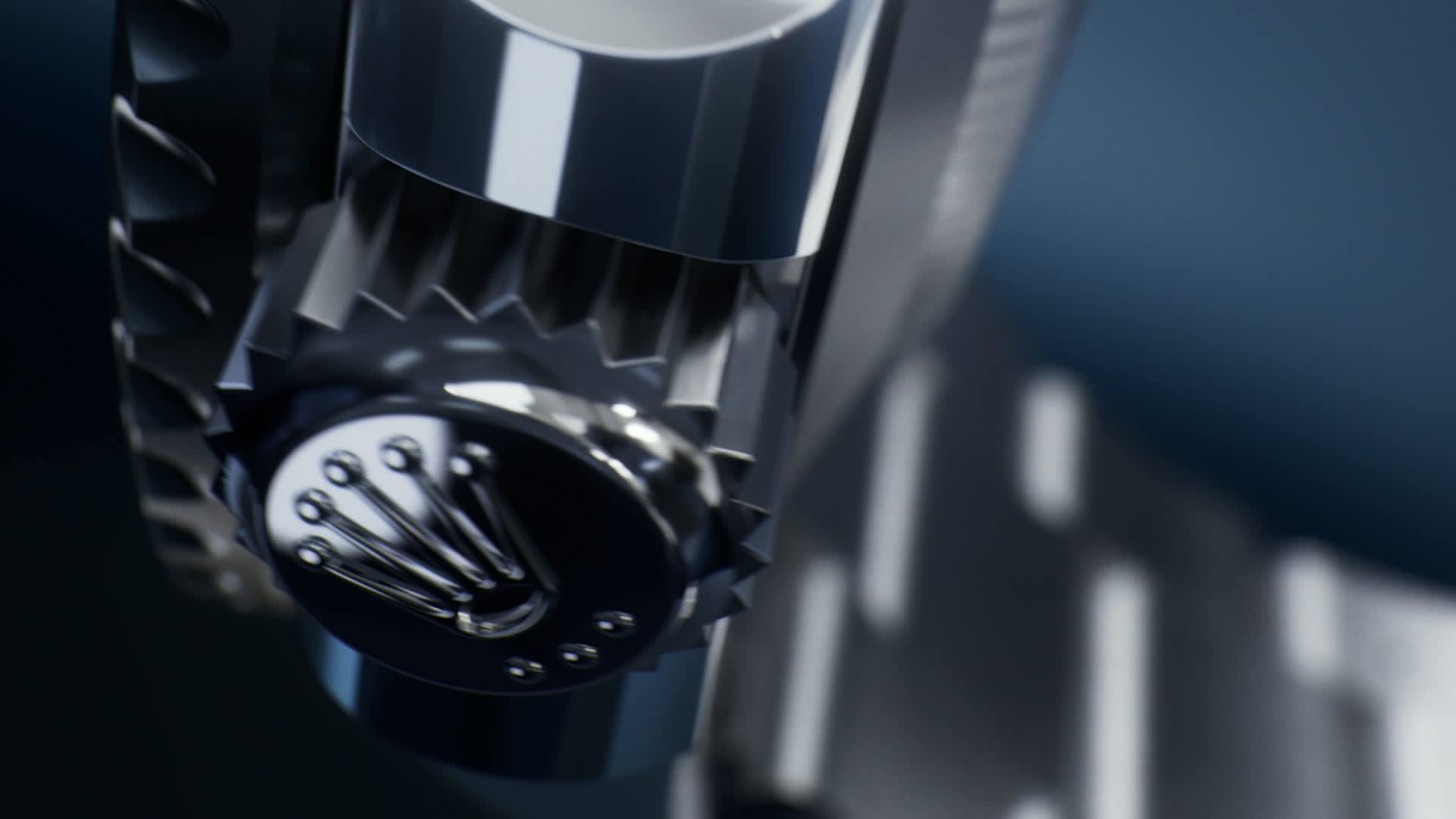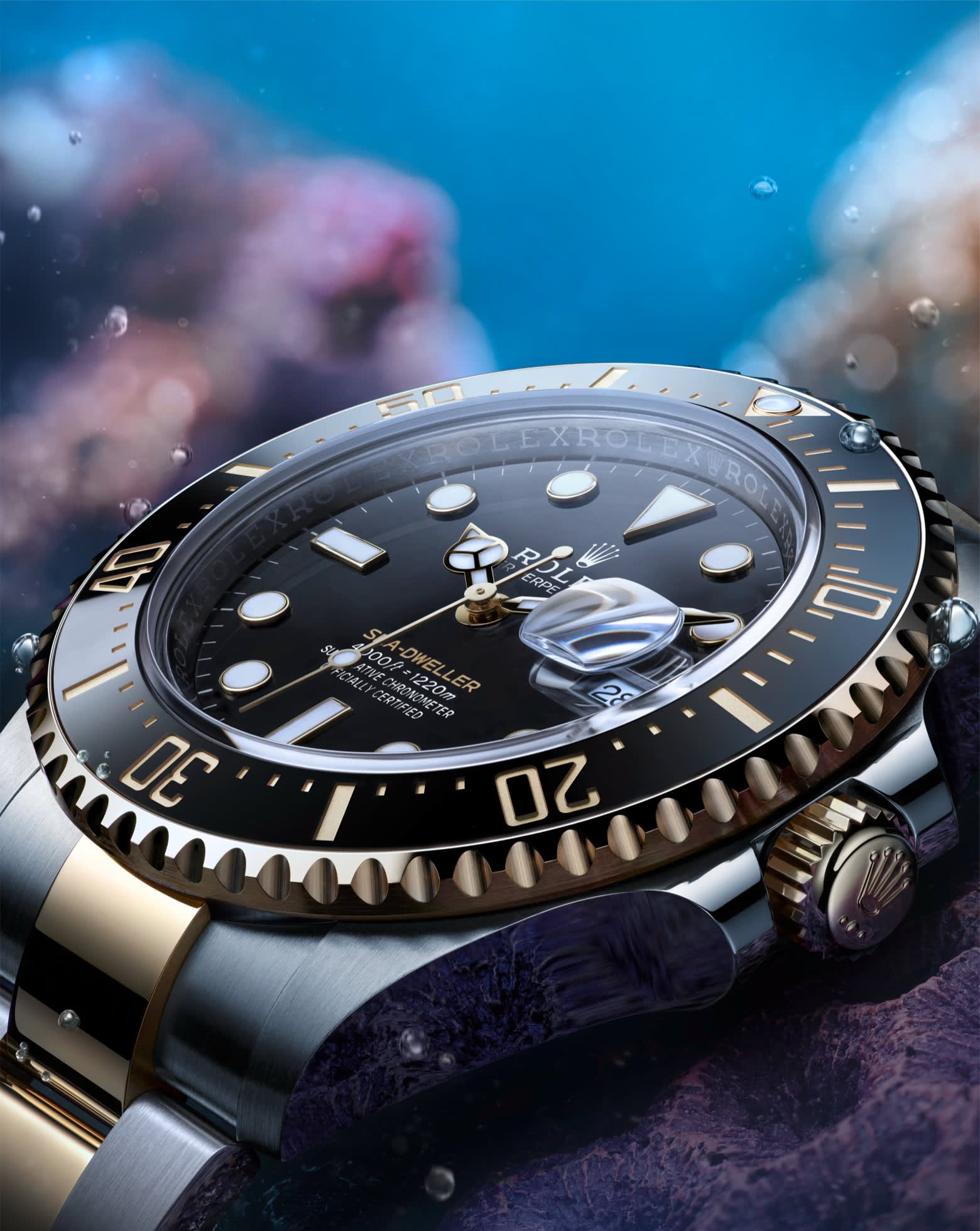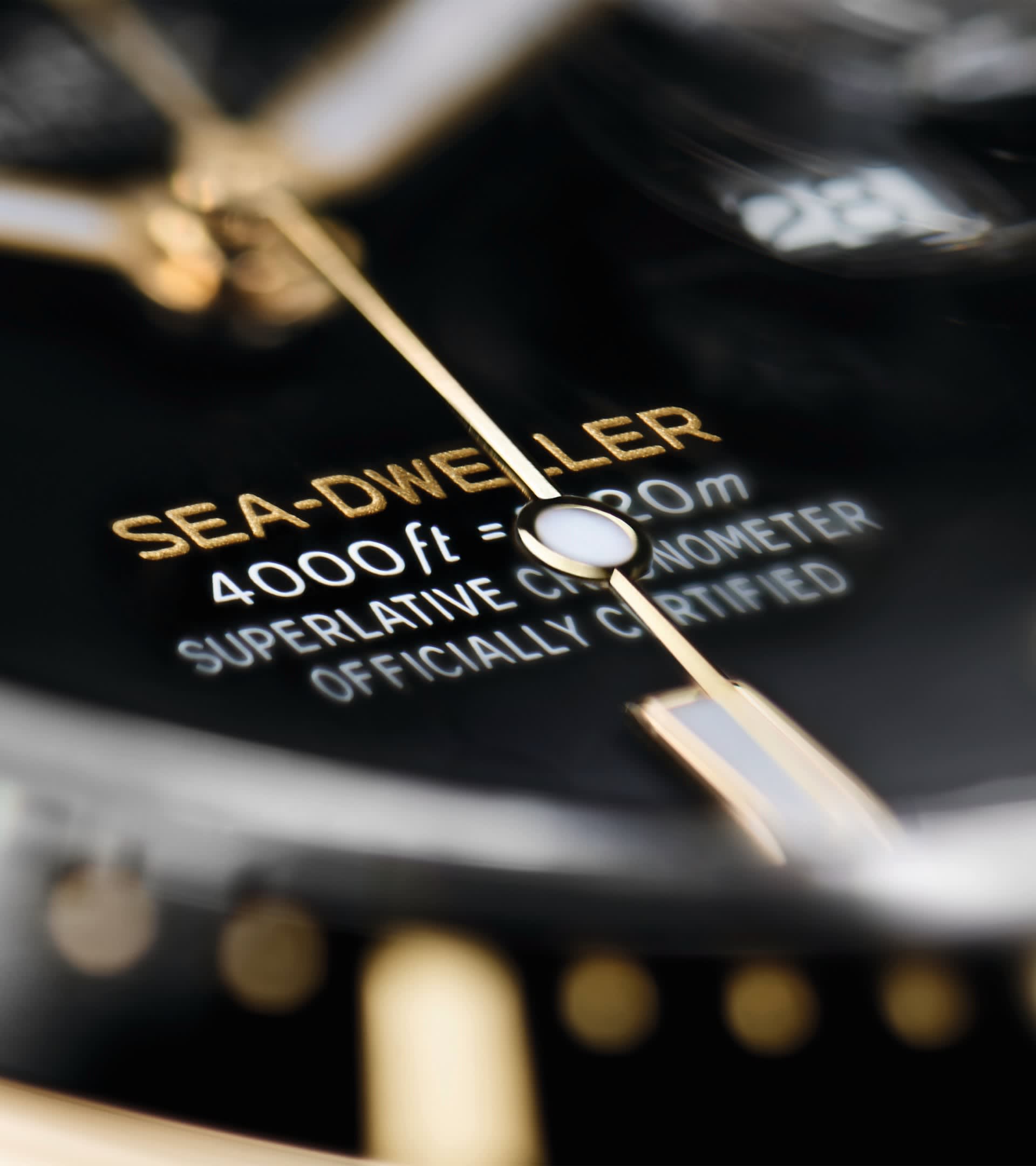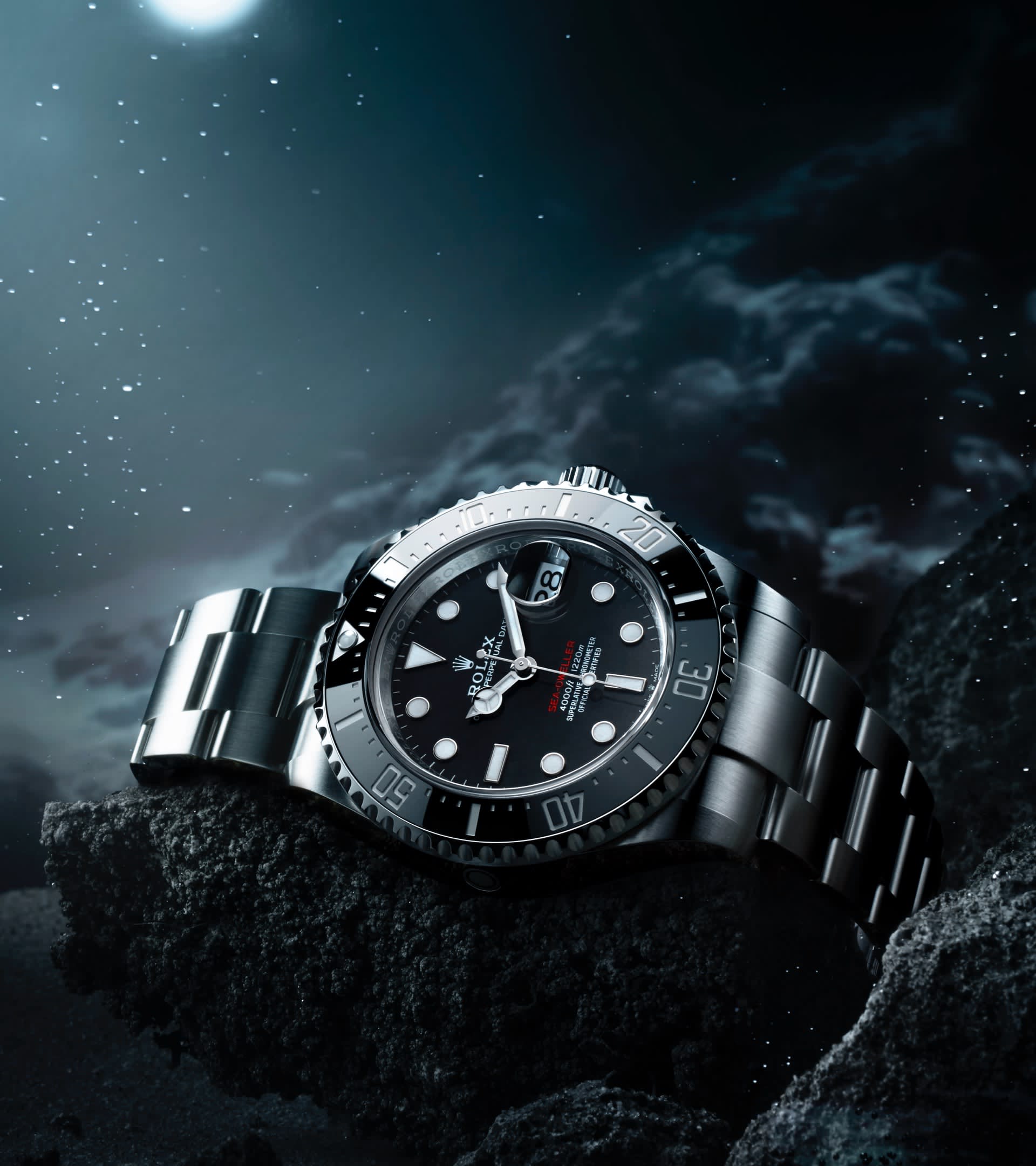
Inhabiting the sea
In the 1960s, so-called “saturation” diving made it possible to remain at great depths for extended periods. It consists of housing divers in a pressurized habitat, so as to reproduce the pressure that prevails in their underwater working environment. This means that they need only undergo a single decompression process, at the very end of the mission.
This process can damage the watch. The divers breathe a mix of gases composed mainly of helium, whose extremely fine atoms can penetrate the case. On returning to the surface, the trapped helium can create a phenomenon of excess internal pressure liable to compromise the integrity of divers’ watches.
In order to overcome this problem, in 1967 Rolex introduced the Sea‑Dweller, a divers’ watch with a helium escape valve. This unique safety valve opens automatically when the internal pressure in the case is too high, allowing the helium atoms to escape.
